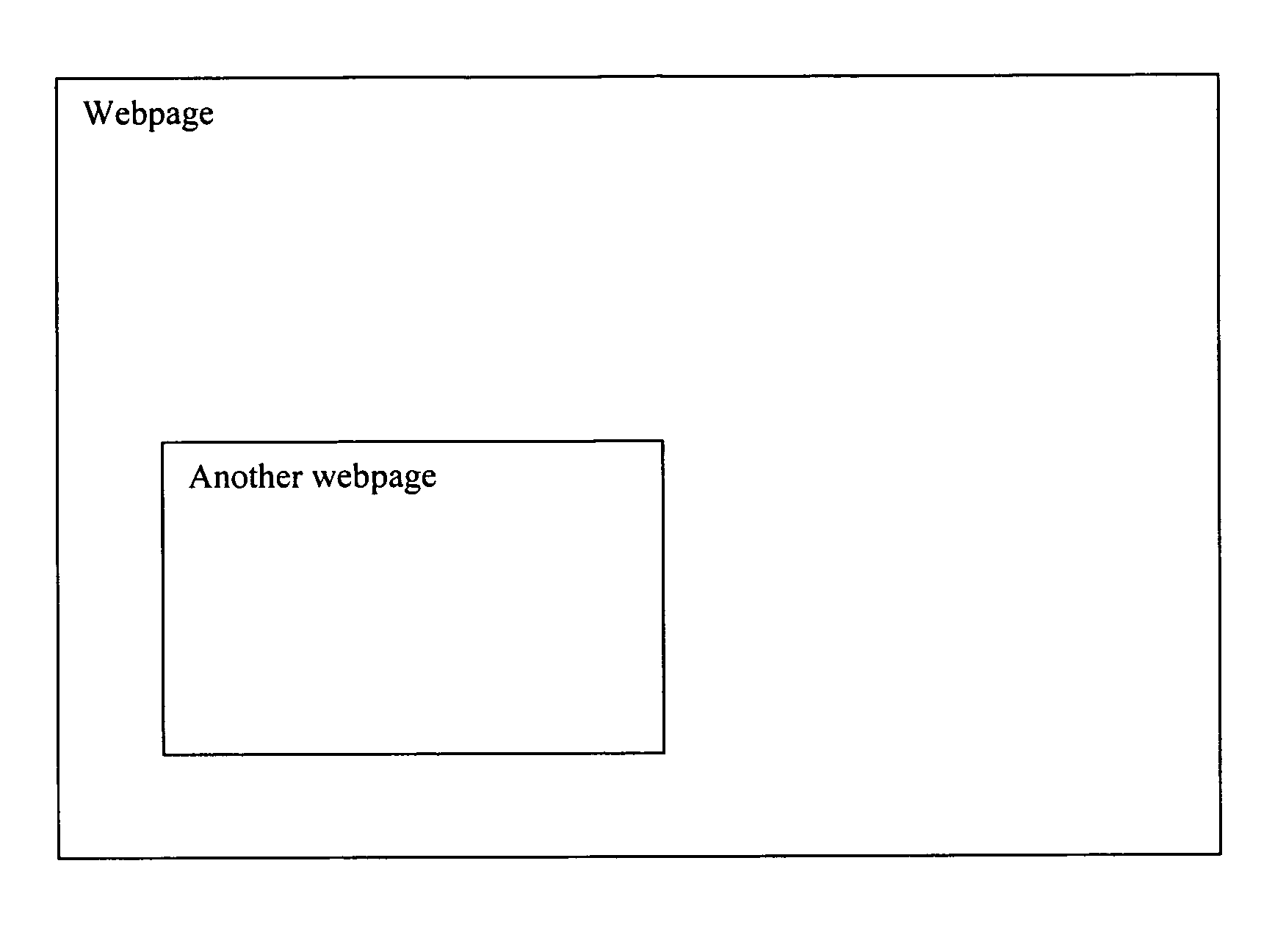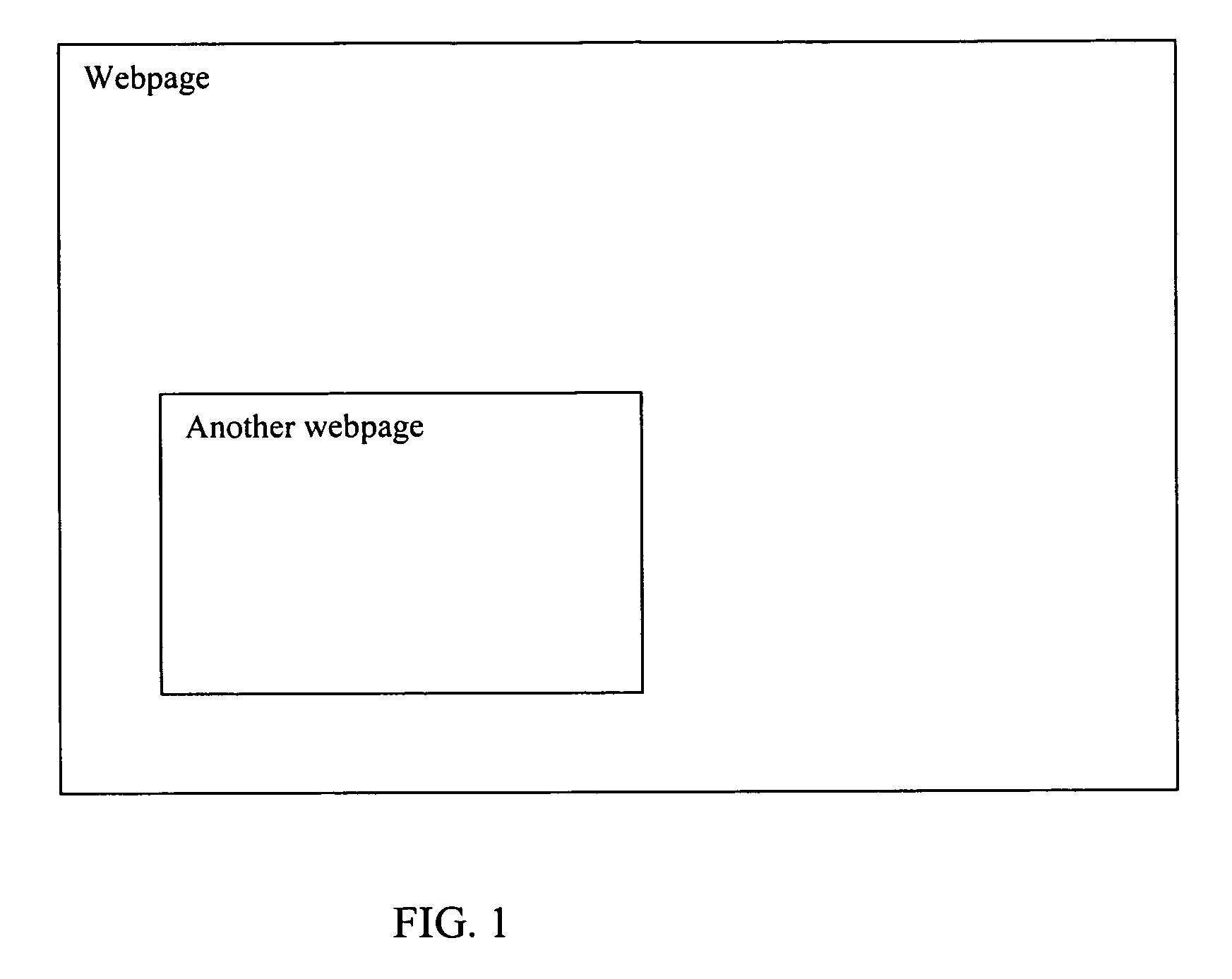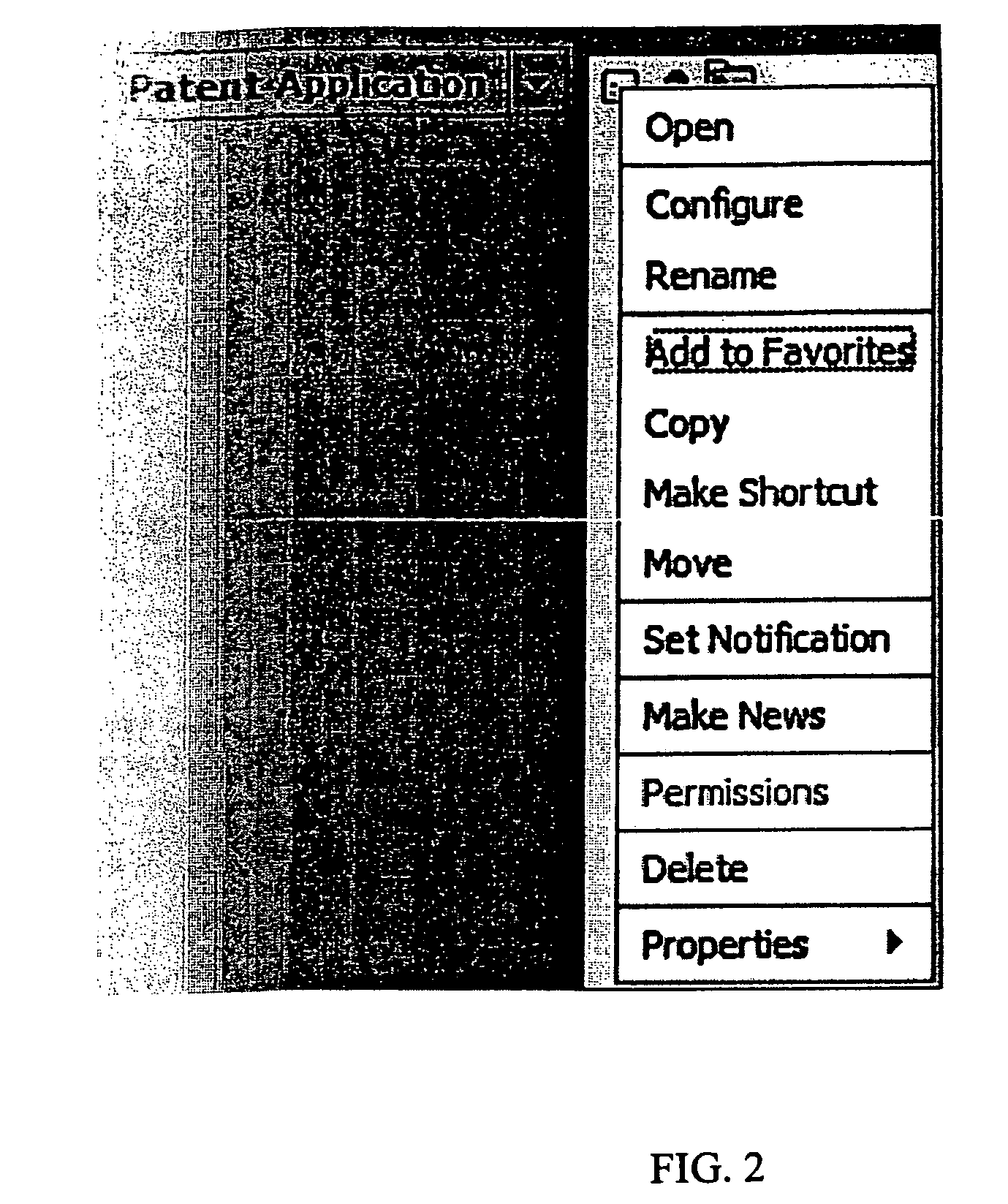Systems and methods for dynamic menus
a dynamic menu and menu technology, applied in the field of dynamic menu systems and methods, can solve the problems of wasting computing resources, unable to have a robust menu system mirroring the menu system commonly found in desktop applications, and unable to achieve the effect of avoiding obstacles to accessibility
- Summary
- Abstract
- Description
- Claims
- Application Information
AI Technical Summary
Benefits of technology
Problems solved by technology
Method used
Image
Examples
Embodiment Construction
[0022]FIG. 3 schematically illustrates an exemplary system for supporting a dynamic menu. As shown in FIG. 3, the exemplary system includes one or more client digital data processing devices 300 (“clients”), one or more application server digital data processing devices 330 (“servers”), and one or more database server digital data processing devices 340 (“databases”). A web browser application 302 (“browser”) residing on client 300 communicates with application server 330 using one or more data communications networks 310 (“networks”). The application server 330 and database server 340 operate together to process application data 350 that is sent to browser 302 in the form of a web page containing an element that allows the person operating client 300 to activate and display dynamic menu content 360 that is tailored based on user information 370 belonging to that person. Some embodiments may also include a screen reader application 301 (such as JAWS® from Freedom Scientific®) that i...
PUM
 Login to View More
Login to View More Abstract
Description
Claims
Application Information
 Login to View More
Login to View More - R&D
- Intellectual Property
- Life Sciences
- Materials
- Tech Scout
- Unparalleled Data Quality
- Higher Quality Content
- 60% Fewer Hallucinations
Browse by: Latest US Patents, China's latest patents, Technical Efficacy Thesaurus, Application Domain, Technology Topic, Popular Technical Reports.
© 2025 PatSnap. All rights reserved.Legal|Privacy policy|Modern Slavery Act Transparency Statement|Sitemap|About US| Contact US: help@patsnap.com



